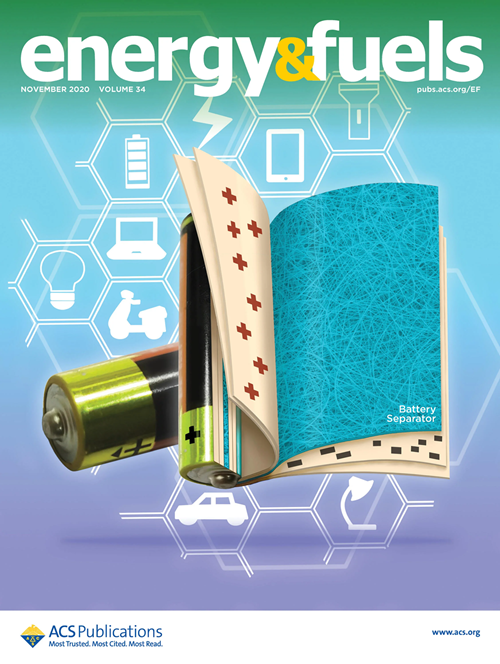利用主动机器学习加速发现二氧化碳固体吸附剂:回顾与展望
IF 5.3
3区 工程技术
Q2 ENERGY & FUELS
引用次数: 0
摘要
随着全球气候变化的日益严重,碳捕集技术对于实现碳峰值和碳中和目标的重要性日益凸显。固体吸附剂具有优异的选择性、高吸附容量和长期稳定性,被认为是有效捕获二氧化碳的关键材料。机器学习作为人工智能领域新兴的重要工具,近年来已被用于催化剂和吸附剂的高效筛选。通过分析现有的材料特性数据,机器学习可以大大提高识别高效二氧化碳吸附剂的有效性和精确性。本研究综述了机器学习技术在二氧化碳捕集领域应用的最新进展,特别关注吸附剂捕集二氧化碳的问题。文章全面总结了几种机器学习技术及其在不同类型二氧化碳吸附剂中的应用,并给出了简明的评论,最后还给出了结论以及一些挑战和展望。本综述可为碳捕集技术的发展提供指导,促进机器学习技术在环境保护领域的广泛应用。本文章由计算机程序翻译,如有差异,请以英文原文为准。

Accelerated Discovery of CO2 Solid Sorbents Using Active Machine Learning: Review and Perspectives
With the escalating severity of global climate change, the significance of carbon capture technology has become increasingly evident with respect to the aim of reaching carbon peak and carbon neutrality. Due to the exceptional selectivity, high adsorption capacity, and long-term stability, solid sorbents are regarded as crucial materials for effective CO2 capture. Machine learning, as an emerging and crucial tool in artificial intelligence, has been adopted for the high-efficient screen of catalysts and sorbents in recent years. By analyzing available data on material properties, machine learning can greatly enhance the effectiveness and precision in identifying high-efficiency CO2 sorbents. This work provides an overview of the latest advancements in the application of machine learning technology in CO2 capture, which specifically focuses on CO2 capture by sorbents. Several machine learning techniques and their applications in different types of CO2 sorbents are fully summarized with concise comments, followed with conclusion and some challenges and perspectives. This review can serve as a guide for the development of carbon capture technology and facilitate the extensive utilization of machine learning technology in environmental protection.
求助全文
通过发布文献求助,成功后即可免费获取论文全文。
去求助
来源期刊

Energy & Fuels
工程技术-工程:化工
CiteScore
9.20
自引率
13.20%
发文量
1101
审稿时长
2.1 months
期刊介绍:
Energy & Fuels publishes reports of research in the technical area defined by the intersection of the disciplines of chemistry and chemical engineering and the application domain of non-nuclear energy and fuels. This includes research directed at the formation of, exploration for, and production of fossil fuels and biomass; the properties and structure or molecular composition of both raw fuels and refined products; the chemistry involved in the processing and utilization of fuels; fuel cells and their applications; and the analytical and instrumental techniques used in investigations of the foregoing areas.
 求助内容:
求助内容: 应助结果提醒方式:
应助结果提醒方式:


